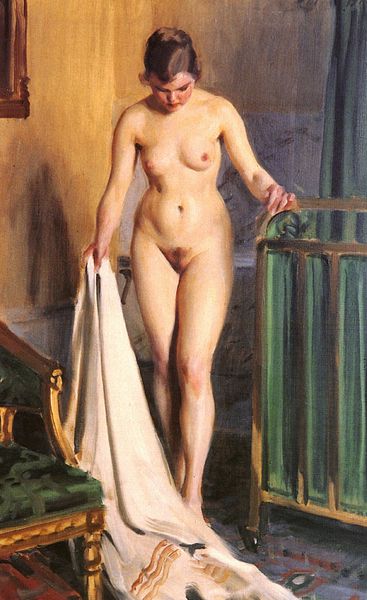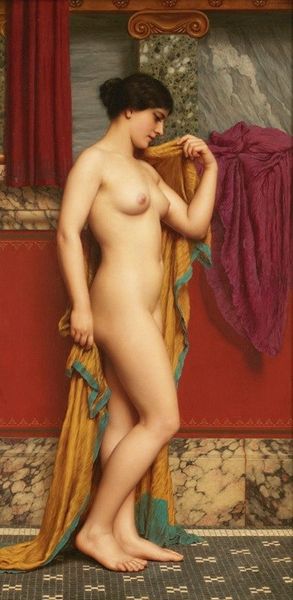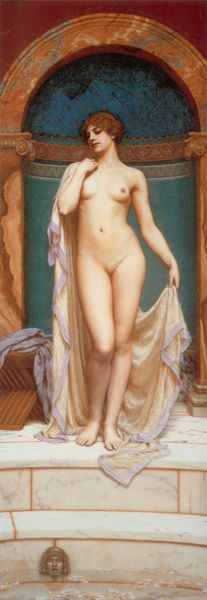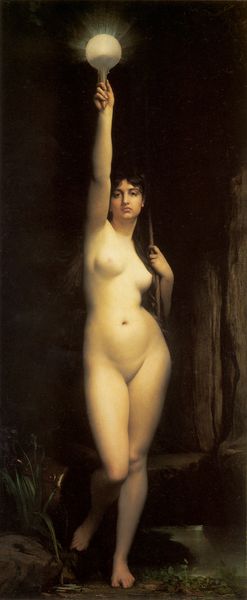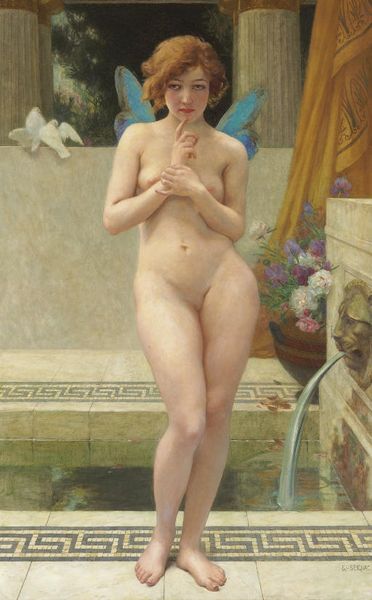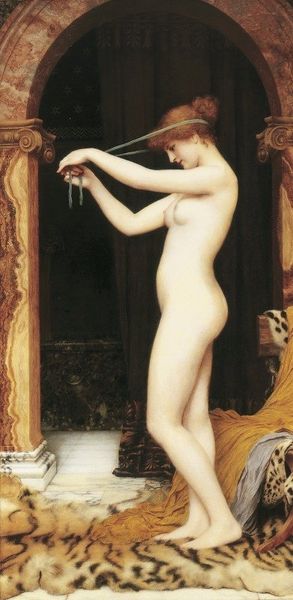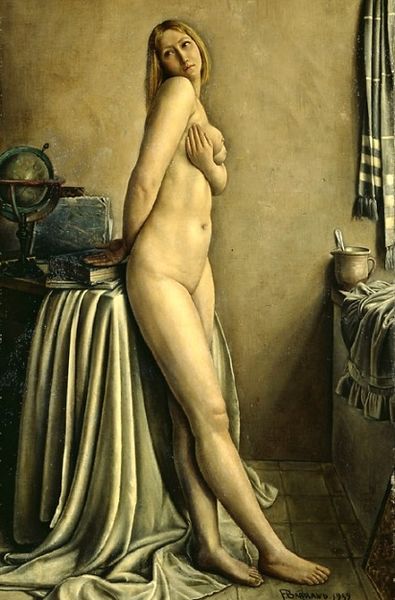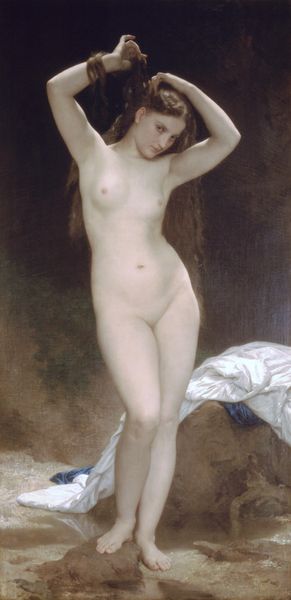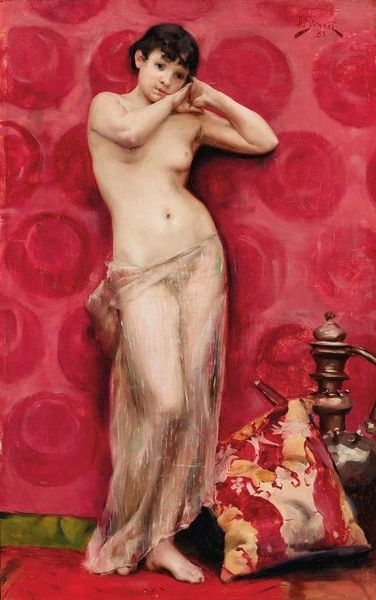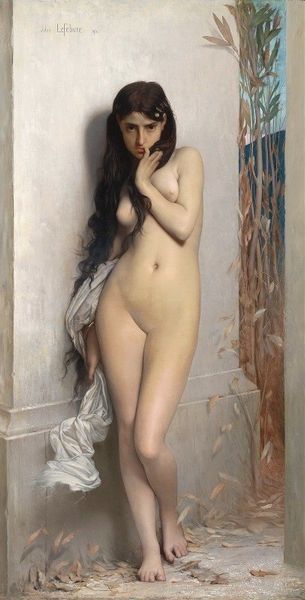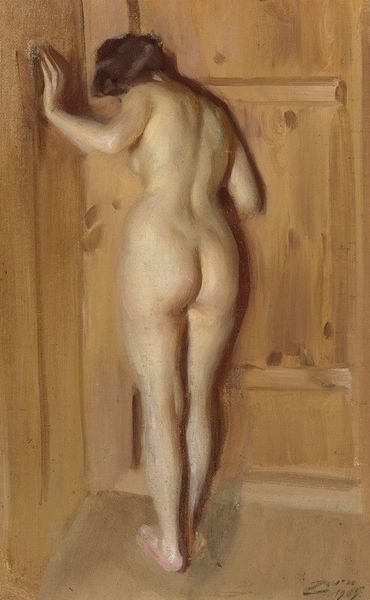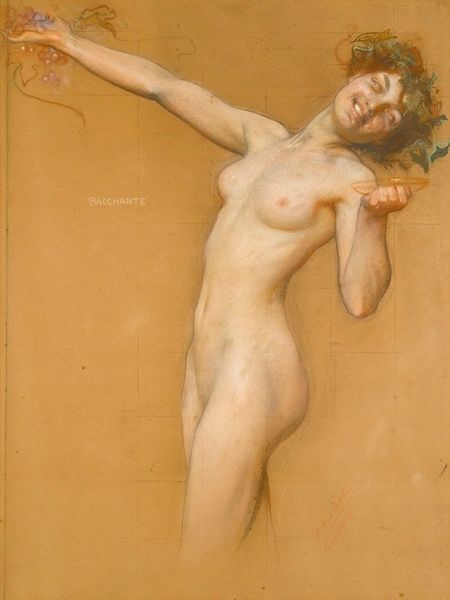
Dimensions: 57 x 26 cm
Copyright: Public domain
Curator: John William Godward's "A Pompeian Bath," painted around 1890, immediately strikes me with its controlled yet sensuous depiction of the female form within a classical setting. It is currently held in a private collection. Editor: My first thought is how strangely detached I feel from the figure. The lighting and her averted gaze create this pristine, almost sterile environment that seems to objectify the woman, despite the rich color palette. Curator: Godward, heavily influenced by Alma-Tadema, positioned himself within the later Neo-classicist movement, meticulously reconstructing Roman domestic life, though perhaps filtered through an idealized Victorian lens. It's academic art striving for historical accuracy but finding a certain drama in its subject. Editor: The drama feels very stage-managed. What interests me is how Godward is deploying the past. We see this fascination with representing the classical world across this period, but here it feels loaded. How does the artist negotiate contemporary perceptions of gender and power through this vision of the past? The erotic gaze feels inescapable. Curator: It is a loaded gaze. The painting entered the public consciousness in the same era as anxieties surrounding decadence and shifting social norms. This romantic vision of antiquity then provided a screen onto which to project all sorts of concerns about morality and pleasure, reflecting the debates raging in Victorian society. Editor: I’d say more than just Victorian society! Even now, viewing it, it’s impossible not to read contemporary notions of beauty and ideal femininity onto this woman. The work serves as a complex lens through which to view not only the 19th-century reception of antiquity but also its problematic and enduring influence on our understandings of gender. The artist creates a controlled and constructed narrative that makes you consider the implications of how women's bodies are represented both then and now. Curator: Absolutely, and the continuing allure of classicism in popular imagination reinforces this point, allowing for both an escape into beauty and a critical interrogation of historical representations. Editor: This conversation shows, in part, the artist’s awareness of what it is to exhibit and create art in his specific period while making work that retains importance even today.
